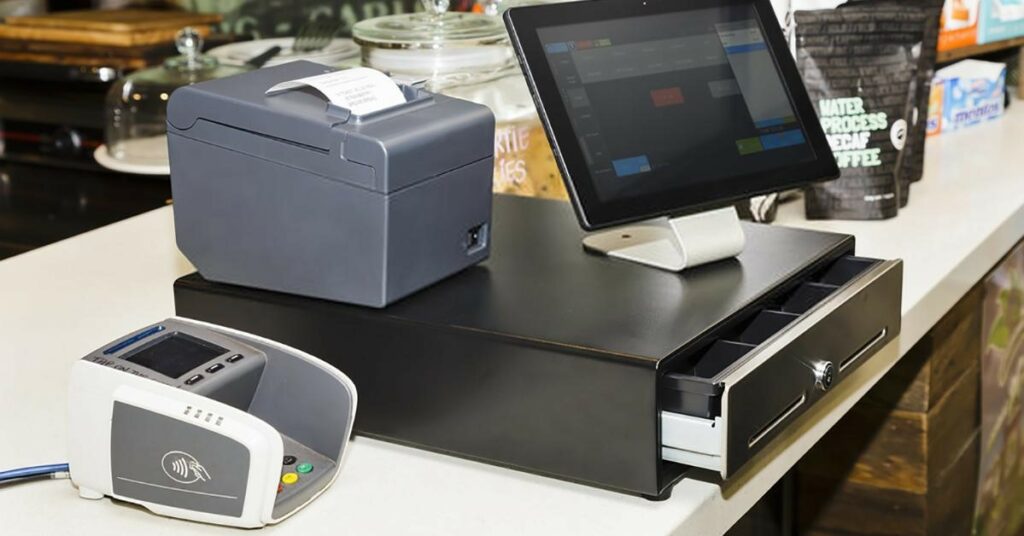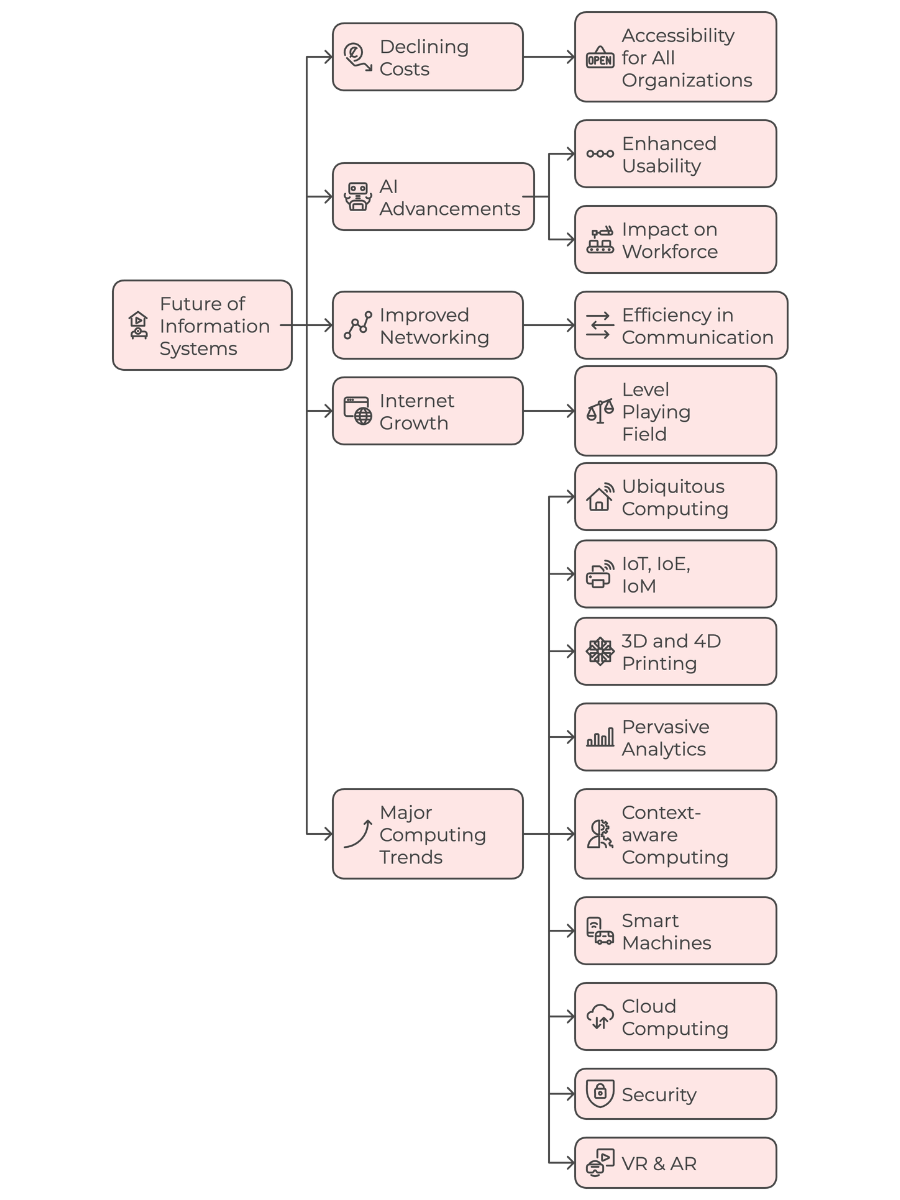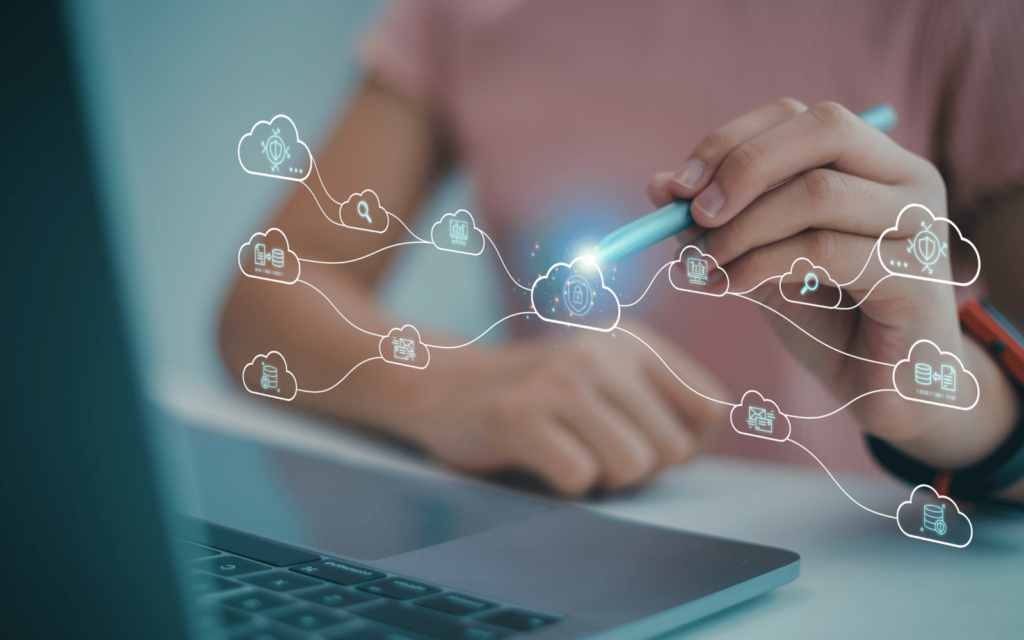Uncategorized
The Future of Information Systems in Business: 15 Key Insights
Businesses use computers and information systems to cut costs and gain a competitive marketplace advantage.
Many computer and information system applications surround you in everyday life.
So, we want to explore some visible trends and share insights into how we expect the future of information systems to unfold.
Key Takeaways on the Future Trends of Information Systems
- Decreasing Costs: Hardware and software costs are expected to continue dropping, making digital technology more accessible.
- AI and Automation Digital Transformation: Artificial intelligence and robotic automation will transform the workforce, with AI improving system usability and robots handling up to one-third of jobs by 2025.
- Increased Computer Literacy: As education systems emphasize computer skills, user proficiency is set to rise.
- Enhanced Networking and Communication Technologies: Network compatibility will improve, facilitating faster, more reliable data transfer and enabling better integration of voice, data, and images across digital devices.
- Internet Expansion: The internet’s growth levels the playing field for small and large businesses, enhancing global collaboration and e-commerce.
- Cybersecurity: With cyber threats becoming more sophisticated, protecting sensitive data will demand ongoing innovation.
- Ubiquitous Computing: Devices in various forms will be accessible through multiple interaction methods (voice, touch – wearable technologies).
- Internet of Things (IoT), Internet of Everything (IoE), and Internet of Me (IoM): Increased connectivity across devices for efficiency.
- 3D/4D Printing: Could lower manufacturing costs by allowing businesses to produce objects from digital designs.
- Pervasive Analytics: Integrating web and mobile analytics into everyday activities for continuous insight.
- Context-Aware Computing: Systems will act as intelligent assistants, recognizing user context.
- Smart Machines: Advances in autonomous technology, like self-driving autonomous vehicles, drones, and smart homes (even smart cities!).
- Cloud Computing Growth: Cloud adoption continues to rise, offering flexible, scalable solutions (you can learn all about the pros and cons of cloud computing in our guide).
- Security Focus: With threats increasing, self-protective applications and security innovation are critical.
- AR and VR: Improvements and adoption of VR, and especially AR’s potential, will continue to expand, offering innovative solutions for more industries with greater civil applications in planning.
Information Systems in Business
Computers and information systems are commonly used in grocery and retail stores as well. For example, a point-of-sale (POS) system speeds up service by reading the universal product codes (UPCs) on items in your shopping cart (see image below).
This same system also manages store inventory; some information systems can even reorder stock automatically. Banks, too, use computers and information systems to generate monthly statements, run automatic teller machines (ATMs), and perform many other banking activities.

A point-of-sale system
The Internet is used for various activities, from shopping to learning to working. Search engines and broadband communication bring information to one’s desktop in seconds. The Internet is also used for social purposes. Organizations also use social networking sites to give customers up-to-date information and how-to support via videos.
These sites can reduce organizations’ costs by providing an inexpensive medium for targeting a large customer base.
So, what do all these examples mean to you?
As you read, remember that the terms information systems and information technologies are used interchangeably. Information systems are broader in scope than information technologies, but the two overlap in many areas.
Both are used to help organizations be more competitive and to improve their overall efficiency and effectiveness. Information technologies offer many advantages for improving informed decision-making but also involve some challenges, such as security and privacy issues.

Predictions On The Future of Information Systems For Business
- As mentioned above, hardware and especially software costs will continue to decline, making information processing less expensive. These cost savings should make information systems affordable for any organization, regardless of its size and financial status.
- Artificial intelligence and related technologies will continue to improve and expand, which will have an impact on business information systems. For example, further development in natural language processing should make information systems easier to use. Also, robots will play a major role in the future workforce. According to Gartner, by 2025, software or robots will be in charge of one out of three jobs.
- As computer basics are taught more in elementary schools, the computer literacy of typical information system users will improve.
- Networking technology and data communication systems will improve. This means that connecting computers will be easier and sending information from one location to another will be faster. Compatibility issues between networks will become more manageable, and integrating voice, data, and images on the same transmission medium will improve communication quality and information delivery.
- Personal computers, mobile phones, and tablets will continue to improve in power and quality, so most information system software can run on them without problems. This trend should make information systems more affordable, easier to maintain, and more appealing to organizations.
- Internet growth will continue, putting small and large organizations on the same footing, regardless of their financial status. Internet growth is essential for collaborative technologies and, of course, making things like DevOps and offshoring essential tasks to companies like us at fram^ easier, despite any geographical distances.
- Computer criminals (hackers) and scammers will become increasingly sophisticated, making protecting personal information more difficult.
Major Computing Trends That Are Already Underway and Will Continue
- Ubiquitous computing: Computing devices everywhere with different sizes and power and accessed through multiple formats such as voice, touch, and gesture
- The Internet of Things (IoT), the Internet of Everything (IoE), and the Internet of Me (IoM): Connected devices through the Web that businesses and individuals will use for increasing productivity and cost savings
3D and 4D printing (printable technologies): Creating a physical object from a 3D and 4D digital model for individual use and businesses. This could significantly bring down manufacturing costs - Pervasive analytics: Building and integrating analytics capabilities into all everyday technology business activities
- Context-aware computing: Widespread promise for applications and deployment of devices that know users, their devices, and their locations and serve as intelligent assistants to businesses and individuals (location technologies)
- Smart machines and devices: Continuous improvements in autonomous self-driving cars, trucks, drones, and even autonomous robots
- Cloud computing: Growth in cloud computing for multiple applications and multiple users
Software-defined applications and infrastructures: The trend toward dynamically assembled infrastructures that are more responsive to user needs and able to deliver results faster, as opposed to predefined infrastructures. - Security: The importance of computer and network security will increase, and more attention will be given to application self-protection
- Virtual Reality and Augmented Reality (VR & AR): Offering immersive experiences and new ways to interact with data, products, and customers, VR and AR technology continue to grow at a steady rate – with Statista expecting a market volume of $62 billion USD by 2029. And as these technologies evolve and adoption increases, their applications will continue to span diverse industries, from retail and manufacturing to healthcare and education.
Wrapping Up The Future of Information Systems
Again, these current trends are showing what businesses and decision makers can embrace in the future to reduce costs, increase efficiency, and gain a competitive edge in the marketplace.
If you are planning to create software for your organization, or developing a Software-as-a-Service that all other businesses need, and you need a reliable tech partner, do not hesitate to contact us. We’re fram^ – a leading software development company in Vietnam.




